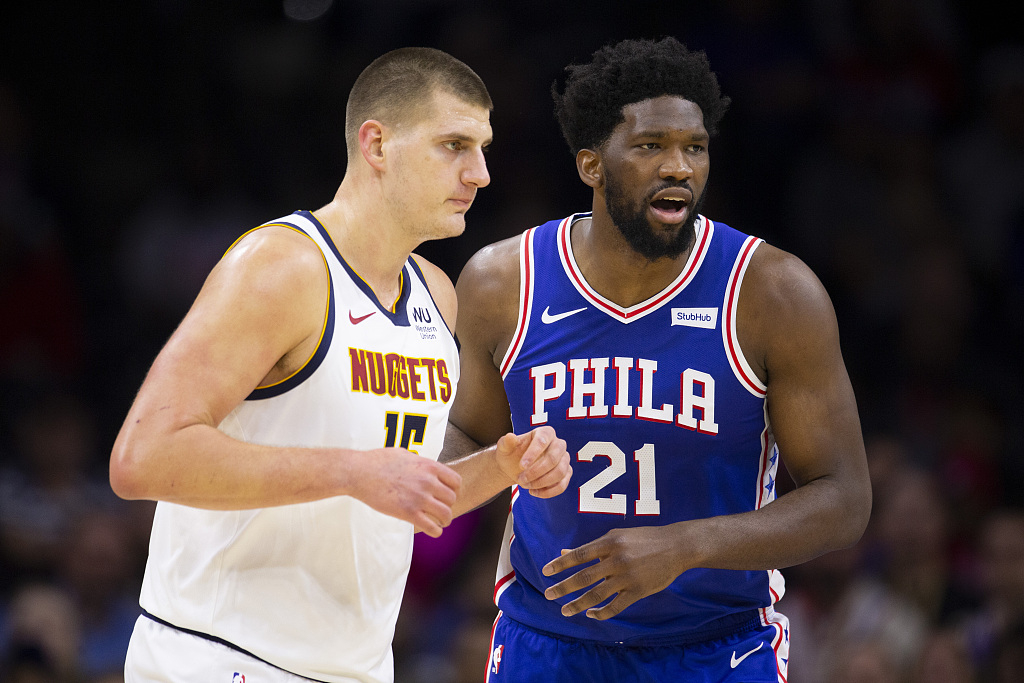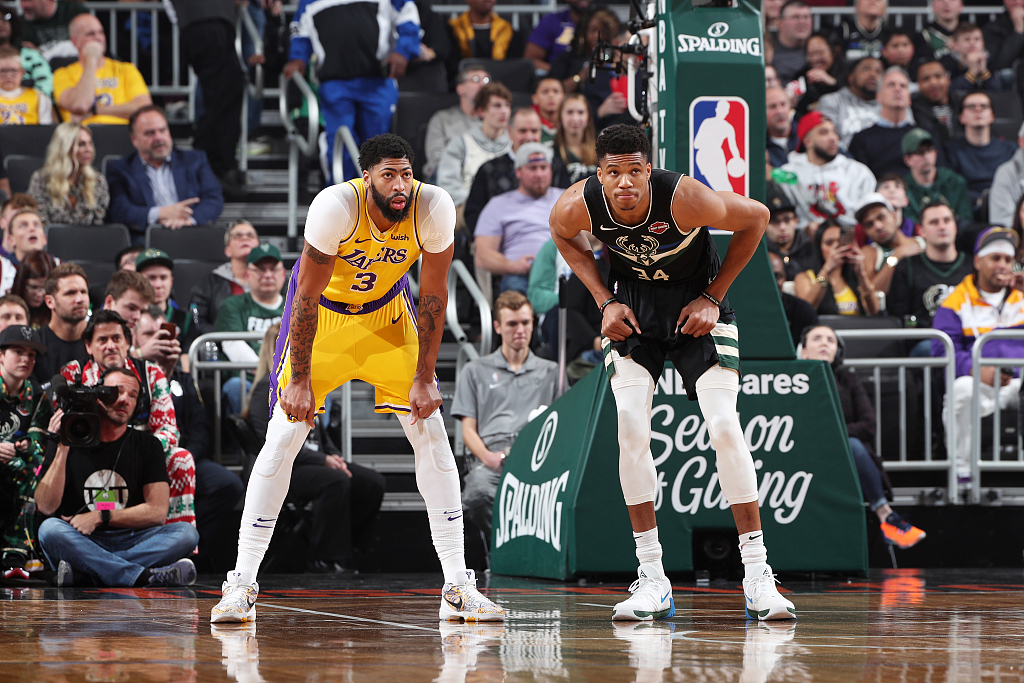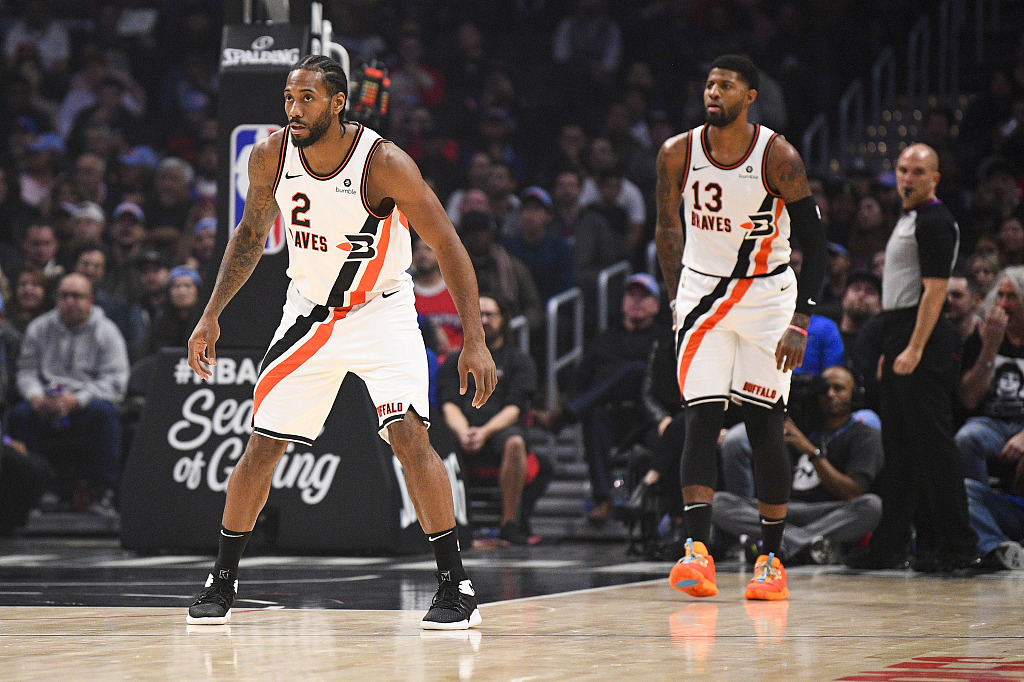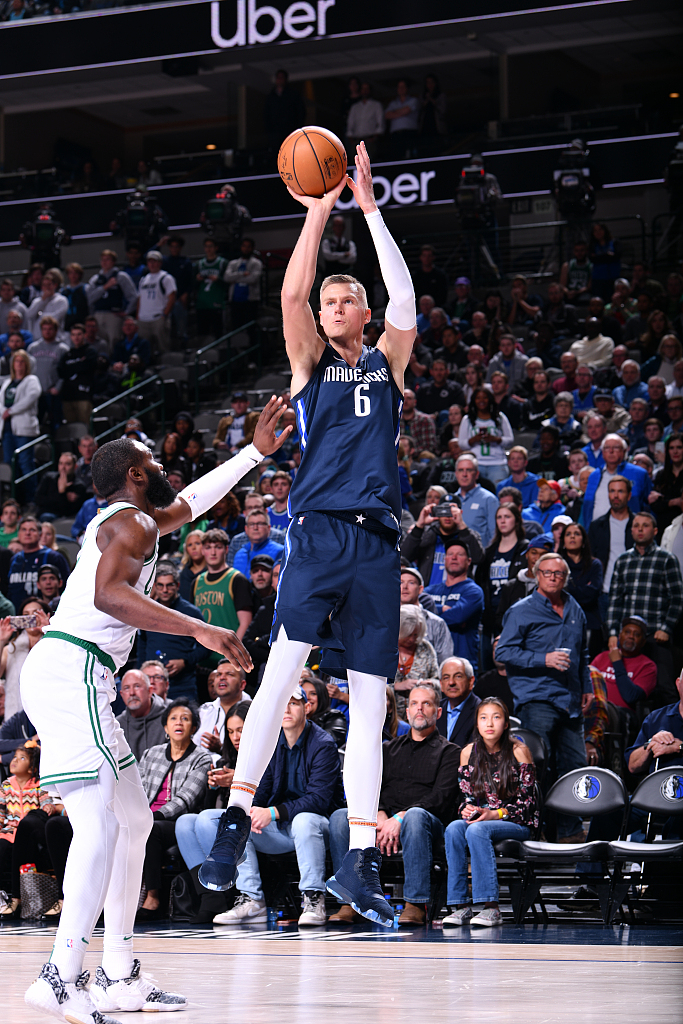
Blake Griffin #23 of the Detroit Pistons, Kevin Love #0 of the Cleveland Cavaliers and LaMarcus Aldridge #12 of the San Antonio Spurs are representatives of NBA power forwards.
Blake Griffin #23 of the Detroit Pistons, Kevin Love #0 of the Cleveland Cavaliers and LaMarcus Aldridge #12 of the San Antonio Spurs are representatives of NBA power forwards.
Basketball website hoopshype.com released on Friday a research report about NBA salaries distribution by position, revealing that in the 2019-20 season, point guards are paid more money than the other four positions and power forwards receive the least.
The distribution percentage by position in the 2019-20 NBA season goes as follows:
Point guards (22.9) (PG), shooting guards (21.5), small forward (21) (SF), power forward (15.7) (PF), center (18.9).
Five, including the top 3 of the league's top 10 paid players this season are point guards and only one is a power forward. On average, a PG saw his salary grow by about 1.4 million U.S. dollars while a PF saw a drop of some 750,000.

Nikola Jokic #15 of the Denver Nuggets and Joel Embiid #21 of the Philadelphia 76ers in the game at the Wells Fargo Center in Philadelphia, Pennsylvania, December 10, 2019.
Nikola Jokic #15 of the Denver Nuggets and Joel Embiid #21 of the Philadelphia 76ers in the game at the Wells Fargo Center in Philadelphia, Pennsylvania, December 10, 2019.
What caused this?
Before we can answer that question, we need to take a look at the situation of the other big-man position, center. Since the league banned hand-check defense in 2005, big men have started to find their lives more and more difficult. As the Miami Heat and the Golden State Warriors made 'small ball' the tendency of today's NBA, many even claimed that center is no longer needed in today's basketball.
That's not true and the proof is out there: Karl-Anthony Towns, Joel Embiid, Nikola Jokic, Rudy Gobert. No matter what style you play, a rim-protector is always needed, especially in the playoffs. And when games get physical, bigger centers are always better choices. That's why centers are always needed. They are just required to do more things.

Anthony Davis #3 of the Los Angeles Lakers and Giannis Antetokounmpo #34 of the Milwaukee Bucks in the game at the Fiserv Forum in Milwaukee, Wisconsin, December 19, 2019.
Anthony Davis #3 of the Los Angeles Lakers and Giannis Antetokounmpo #34 of the Milwaukee Bucks in the game at the Fiserv Forum in Milwaukee, Wisconsin, December 19, 2019.
Nonetheless, power forwards have not been doing so well. If you take a look at the six forwards in last year's All-NBA teams – Giannis Antetokounmpo, Paul George, Kevin Durant, Kawhi Leonard, LeBron James, Blake Griffin – only Griffin is a true power forward. George, Durant, Leonard and James are better-known as small forwards. As for Antetokounmpo, he has played all four positions, except shooting guard.
Taking two years back, only LaMarcus Aldridge and Anthony Davis entered the league as power forwards, not to mention that Davis has already proved that he's the perfect center for small-ball squad, whether he likes it or not.

Kawhi Leonard #2 and Paul George #13 of the Los Angeles Clippers in the game against the Portland Trail Blazers at the Staples Center in Los Angeles, California, December 3, 2019.
Kawhi Leonard #2 and Paul George #13 of the Los Angeles Clippers in the game against the Portland Trail Blazers at the Staples Center in Los Angeles, California, December 3, 2019.
Things get even more interesting when you take a closer look at the units of strong teams this season. The Milwaukee Bucks and Antetokounmpo aside, the Boston Celtics always choose from three small forwards – Jaylen Brown, Jayson Tatum and Gordon Hayward – as their PF. The Miami Heat put Jimmy Butler, a 2.01-meter-tall swingman as PF in their game-winning squad. Both George and Leonard can play PF for the Clippers. The Utah Jazz choose from Royce O'Neale, Joe Ingles or Bojan Bogdanovic for their PF and none of they are either small forwards or shooting guards.
It's safe to say that most teams choose an SF to do PF's job. Now, back to that question, what caused the fall of power forwards?

Kevin Garnett #5 of the Boston Celtics defends Tim Duncan #21 of the San Antonio Spurs in the game at the AT & T Center in in San Antonio, Texas, March 17, 2008.
Kevin Garnett #5 of the Boston Celtics defends Tim Duncan #21 of the San Antonio Spurs in the game at the AT & T Center in in San Antonio, Texas, March 17, 2008.
They don't play that important roles any more. During the last two PF golden ages, the super-star PFs you can name, Karl Malone, Charles Barkley, Kevin McHale, Tim Duncan, Dirk Nowitzki, Kevin Garnett, Rasheed Wallace, Chris Webber, had jobs that included: posting up, orchestrating around the free throw line or the two elbow areas in offense and patrolling for help defense.
However, offense has been increasingly the job of perimeter players since 2005; teams have higher demand for spacing since 2013. As a result, posting up, thanks to its slow speed and not-so-fantastic efficiency, began to lose its importance to offense.
In defense, as more teams turned to "switch everything" and cut down their franchise sizes, small forwards, thanks to their better quickness, are taking over from bigger but also slower power forwards as the defensive cleaner.

Kristaps Porzingis #6 of the Dallas Mavericks shoots the ball in the game against the Boston Celtics at the American Airlines Center in Dallas, Texas, December 18, 2019.
Kristaps Porzingis #6 of the Dallas Mavericks shoots the ball in the game against the Boston Celtics at the American Airlines Center in Dallas, Texas, December 18, 2019.
Like centers, today's PFs are required to stretch out the spacing and that explains why four of the top 10 catch-and-shoot attempters this season are power forwards: Taurean Prince of the Brooklyn Nets (No. 2), Lauri Markkanen of the Chicago Bulls (No. 3), Kristaps Porzingis of the Dallas Mavericks (No. 8) and Danilo Gallinari of the Oklahoma City Thunder (No. 10).
In defense, PFs either sit on the bench when game is on the line because they are slow; or they play as centers. As for super stars like Davis or Antetokounmpo, they are still teams' favorites, especially so when they can make bigger contributions in the new position.